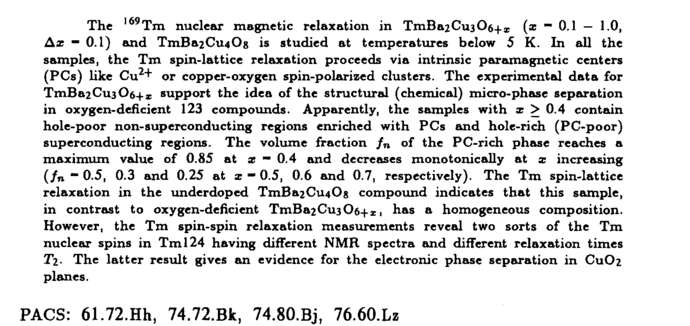|
|

| VOLUME 64 (1996) | ISSUE 5 |
PAGE 365
|
Comparative studies of the Tm NMR in thulium 123 and 124 compounds: Evidence for structural and electronic phase separation
Bakharev O.N., Dooglav A.V., Egorov A.V., Krjukov E.V., Sakhratov Yu.A., Teplov M.A., Brom H.B., Witteveen J.

|
|


 Home
Home